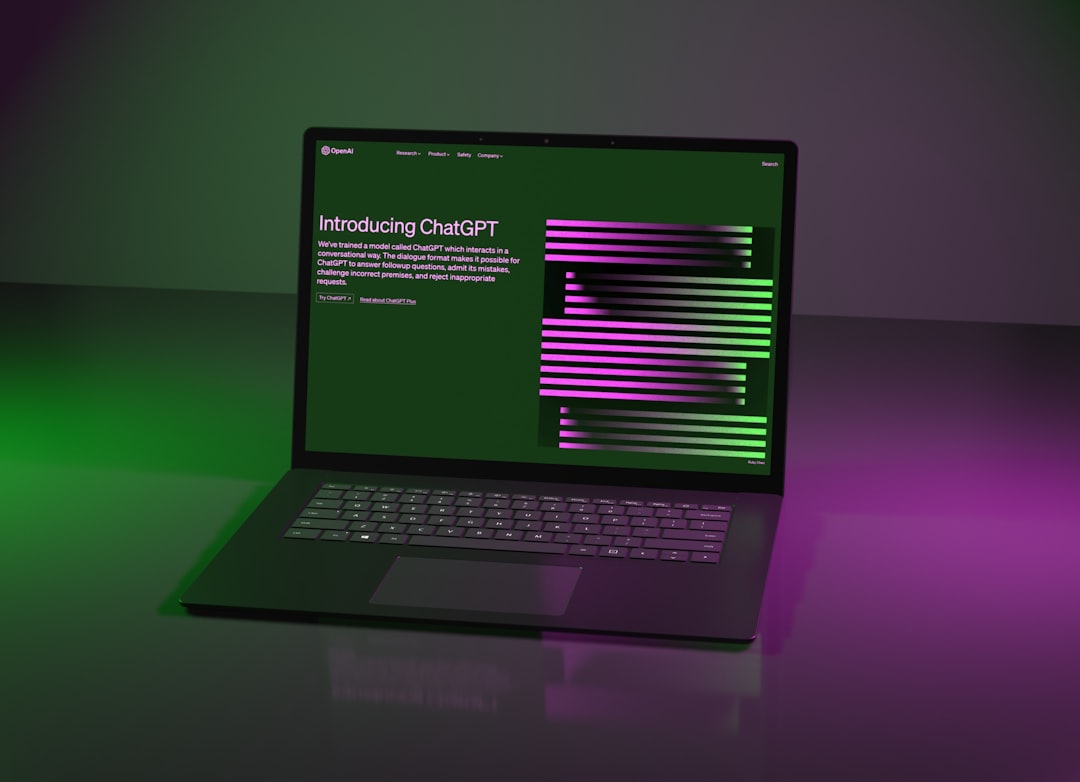Creating GPT Prompts for Business Development - A Detailed Tutorial
September 14th, 2023

Creating GPT Prompts for Business Development - A Detailed Tutorial
Creating Effective GPT Chat Prompts for Business Development: A Comprehensive Tutorial
Business development, a critical aspect of any successful enterprise, is being revolutionized by the integration of artificial intelligence technologies. One such innovation that's making waves in the industry is Generative Pre-trained Transformer (GPT) chatbots. These AI-driven tools are capable of simulating human-like text conversations, providing interactive and dynamic customer interactions.
With the rapid adoption of AI chatbots in various businesses, creating effective GPT prompts has become an essential skill. GPT chat prompts guide these virtual assistants in delivering apt and context-specific responses. However, crafting a compelling and effective prompt isn't as simple as it may seem. It demands a solid understanding of your business objectives, audience needs, and contextual relevance to create a fluid, engaging conversation with customers.
According to Business Insider, 80% of businesses want chatbots by 2021. This growing demand highlights the importance of mastering GPT chat prompt creation for business development roles. Considering the high stakes involved and the remarkable potential that well-crafted chat prompts hold, it's important not just to implement chat prompts, but to do so strategically.
Understanding GPT and Its Application in Business Development
Generative Pre-training Transformer, commonly known as GPT, is a revolutionary Artificial Intelligence (AI) model developed for understanding and generating human-like text. It holds vast potential for various applications, one of the most promising among them being business development.
In the context of business development, GPT can be leveraged to automate and enhance numerous tasks. For instance, it can be used to create interactive chatbots, generate automated responses, or develop insightful content. This powerful AI model learns from the vast amount of data it's trained on, allowing it to understand context, make connections, and even exhibit creativity in its responses.
Business development involves establishing long-term value for an organization from customers, markets, and relationships. The key here is communication - clear, consistent, and engaging. GPT, with its advanced language comprehension and generation capabilities, provides a tool that can significantly enhance this communication. It can help businesses deliver personalized customer experiences, respond promptly to inquiries, and provide detailed information on products or services, all while reducing the workload on human staff.
In essence, the application of GPT in business development opens up new avenues for businesses to interact with their customers and prospects. Whether it's through an automated chat system answering queries round the clock, or through personalized product descriptions generated on-the-fly, GPT has the potential to transform the way businesses communicate and engage.
Key Elements to Consider When Creating a GPT Chat Prompt
The Importance of Context in Your GPT Chat Prompt
Integrating context into your GPT chat prompts can make a significant difference in the quality of customer interaction. Context plays an essential role, as it ensures that the responses generated by the AI chatbot are not just correct but also relevant and meaningful to the user's query.
Consider this: A user might ask the bot about the company's product features. The bot needs to understand the context behind this question, such as whether the user is a potential customer exploring options or an existing customer looking for specific information. Different contexts would require different responses. Therefore, designing your prompts with a clear understanding of possible contexts can lead to more effective and personalized customer interactions.
Relevance is another critical aspect tied closely with context. If your chatbot responses are out of context, they will likely be irrelevant, leading to customer frustration and missed business opportunities. For example, if a user asks for product recommendations based on their past purchases, the chatbot should be able to provide tailored suggestions, demonstrating its understanding of the user's preferences and purchase history.
In conclusion, maintaining contextual relevance is key to enhancing customer interaction through GPT Chat Prompts. It ensures that your bot's responses are not just technically accurate but also meaningful and valuable to each user. This will ultimately improve customer satisfaction and contribute positively to your business growth.
Balancing Brevity and Information in a GPT Chat Prompt
Striking a balance between brevity and information is crucial when crafting your GPT chat prompts. This involves understanding your audience's needs and presenting information in an easily digestible manner.
Brevity, in this context, refers to keeping your prompts concise yet meaningful. The goal here is to not overwhelm the user with too much information at once. By keeping your prompts short and straightforward, you help maintain the user’s interest and attention. Remember, the longer a prompt is, the harder it is for the user to quickly grasp its meaning. Short, well-structured sentences can make your prompts more comprehensible and straightforward.
On the other hand, ensuring that there's enough information in your GPT chat prompts is also essential. Your prompts should provide sufficient context to guide the AI model towards generating the desired responses. This means including necessary details and framing your requests clearly.
Effective communication lies in marrying brevity with information. It's about delivering the right amount of information in the least complex way possible. One way to achieve this is by focusing on one idea per prompt. This helps in avoiding confusion and keeps the conversation focused. Also, always aim to use simple, clear language over jargon and complex phrases.
In essence, creating effective GPT chat prompts is a balancing act. You need to provide enough information for the AI to understand the context without making the text too long and difficult for it to interpret correctly. Practice, along with consistent testing and refining, will help you master this balance.
Step-by-step Guide to Develop an Effective GPT Chat Prompt
Aligning the Prompt with Business Objectives
Incorporating your business objectives into the creation of your GPT chat prompt is an essential step in ensuring the effectiveness and relevance of your AI-powered interactions. This process, known as goal alignment, ensures that the prompts you create are not only engaging but also serving a purpose aligned with your strategic goals.
To start aligning the prompt with your business objectives, it's crucial to first have a solid understanding of what these objectives are. They could range from nurturing leads, increasing customer engagement, to promoting a new product or service.
Once you've identified your key business objectives, you can begin crafting prompts that directly support these goals. For example, if one of your objectives is to enhance customer service, your GPT chat prompt might be tailored to promptly answer frequently asked questions. If your objective is to generate more leads, your GPT chat prompt could be designed to guide visitors towards sharing their contact information or showing interest in your offerings.
Remember, the objective is for your GPT chat prompt to provide value while simultaneously driving your business agenda. It's all about creating a perfect balance between engaging interactions and strategic intent.
Moreover, it's essential to continually revisit and reassess your business objectives and the alignment of your GPT chat prompts. As your business grows and evolves, so too should your prompts. Regular reviews will ensure that your GPT chat prompts always stay relevant and continue to contribute effectively to your business development strategies.
Testing and Refining the GPT Chat Prompt
Testing and refining your GPT chat prompts is a crucial step in ensuring their effectiveness. It's through this iterative process that you can improve the prompt's performance, fine-tune its approach, and guarantee that it aligns with your business objectives.
Initially, carry out A/B testing on your chat prompts. This involves creating two slightly different versions of the same prompt and deploying them to see which one performs better. Monitor key performance indicators (KPIs) like engagement rate, response time, and customer satisfaction to evaluate the success of each version.
Feedback plays an integral part in refining your chat prompts. Make sure to gather feedback from both customers and your internal team. Customers can provide valuable insights into whether the chat prompt was helpful, engaging, and easy to understand. On the other hand, your team can offer a professional perspective, highlighting areas that might need improvement based on their expertise.
Incorporate the feedback into subsequent versions of your chat prompt. You might need to make adjustments to the tone, language, or call-to-action based on the insights gathered. Remember, refining your GPT chat prompt is not a one-time task but a continuous process that evolves along with your business and customer needs.
Finally, use AI training tools to further optimize your chat prompt. These tools help identify patterns, trends, and opportunities for improvement that might not be obvious at first glance. By combining human feedback with AI-driven insights, you can create a GPT chat prompt that truly meets your business development goals.
Remember, the goal is to continually learn, adapt, and refine. Your chat prompt should never remain static; it must evolve to meet the changing demands of your business and clientele.
Successful Use Cases of GPT Chat Prompts in Business Development
One of the most effective ways to understand the impact of GPT chat prompts in business development is through real-world examples. Let's explore some successful use cases that exemplify their potential.
In the realm of customer service, a global e-commerce company used GPT chat prompts to engage with potential customers. They developed an AI chatbot that addressed queries about product specifications, delivery timelines, and pricing details. The result was a 24% uplift in sales as the prompt responses helped customers make quick purchase decisions.
In another instance, a leading software-as-a-service (SaaS) provider took advantage of GPT chat prompts to manage their lead generation process. Their AI-driven chatbot uses specific prompts to gather information about website visitors, such as their industry, size of the organization, and interest in services. This data is then used by the sales team to tailor their pitches according to the prospects' needs, resulting in a higher conversion rate.
A multinational banking corporation has also benefited from GPT prompts by deploying them for its customer support channels. By creating context-specific prompts, they managed to reduce response time, significantly enhancing customer satisfaction and loyalty.
Moreover, a healthcare startup incorporated GPT chat prompts to deliver personalized health advice to their users. By asking relevant questions and offering tailored suggestions based on the user's responses, they not only increased user engagement but also positioned themselves as a trusted source of health guidance.
These success stories highlight the transformative potential of GPT chat prompts in different sectors of business development. Implementing such AI-powered tools can lead to improved customer interaction, streamlined operations, and ultimately, significant growth.
As we navigate the digital age, making use of AI tools like GPT for business development is no longer an option but a necessity. Mastering the art of creating effective chat prompts can make a significant difference in our engagement with customers and reaching business objectives. Remember to focus on context relevance, balance brevity with information, align prompts with business goals and continually refine based on feedback.
Exploring real-life use cases not only provides inspiration but also tangible evidence of how GPT chat prompts can drive business growth. With this comprehensive guide, you are now equipped to leverage GPT in your business development strategy, fostering better interactions, driving more engagements, and achieving greater success. The future of business development is here; it's time to embrace it.
Other articles
September 25th, 2023
Step-by-Step Guide: How to Use GPT-4 for Article Rewriting
Includes crafting effective prompts and examples. read more...
October 28th, 2023
Exploring the Structure and Functionality of GPT and LLAMA
age models - Generative Pre-training Transformer (GPT) and LAnguage Model Analysis (LLAMA). Understand their functionality, operation and role in natural language understanding tasks. read more...
August 4th, 2023
Secret Project from Stability AI. Stable Swarm Install Guide.
er experience for Stable Diffusion. source read more...






